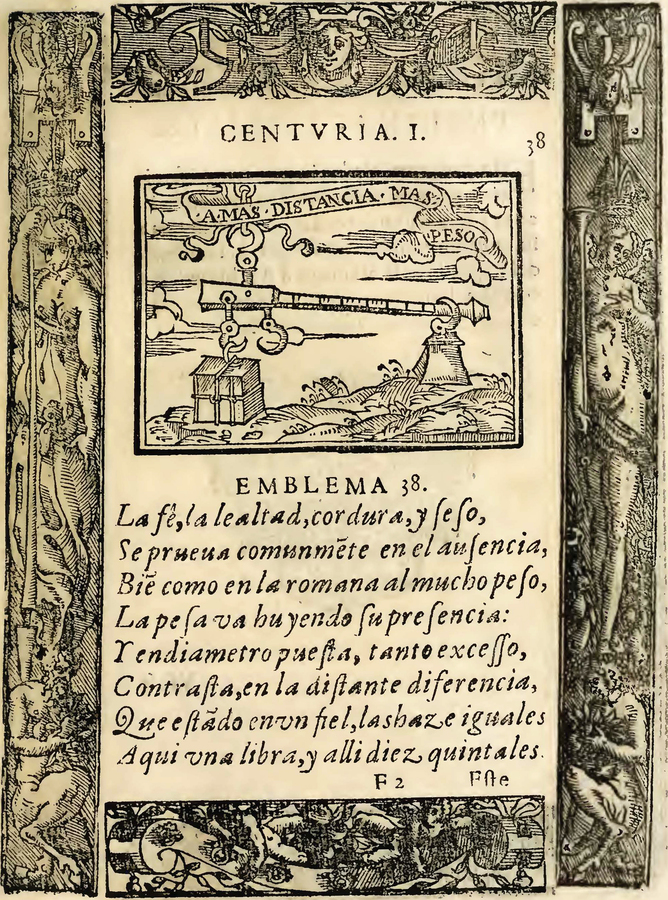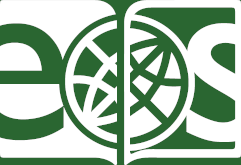In this book we have presented two hitherto unknown, seemingly “marginal” sources, in the true sense of the word: Guidobaldo del Monte's marginal annotations to two key texts of medieval and Renaissance mechanics by Jordanus de Nemore and Giovanni Battista Benedetti, respectively. These annotations shed new light on a long forgotten and seemingly insignificant controversy about the indifferent equilibrium of a balance. This controversy in fact played a crucial role in the emergence of central concepts of mechanical knowledge. At the same time, it constituted a transformation of antiquity in the sense of the construction of an authoritative reference culture – in this case for mechanical arguments – under premises that were themselves created by this culture. These included the transmission of practical and theoretical knowledge about the balance.1
In the course of the controversy, the reference to an authoritative and encompassing tradition such as Aristotelian natural philosophy – whether affirmative or negative – provided a model and a reservoir of theoretical knowledge. It sharpened and multiplied conceptual tensions and embedded the specific issue of the equilibrium of a balance in a wider network of knowledge such as the cosmological question of the shape of the earth. Paradoxically, the controversy also resulted in a challenge to the canonical status of this framework by creating a plurality of perspectives on the ancient heritage.
In our historical analysis of this controvery, we have followed an unconventional approach. Rather than concentrating on a “thick description,” in the sense of providing a rich context to render a distant historical situation meaningful for the observing historian, we have attempted to develop what one may call a “long description,” in the sense of tracing into the deep past the chain of historical dependencies that lie behind a specific event. In this way, we have been able to describe the fate of a crucial component of mechanical knowledge as the result of a connected – but not continuous – history in which long-term cumulative effects, the intermittent transmission of material culture and written documents, contingent events, varying cultural contexts, and perspectival changes left a lasting imprint on the conceptual organization of this knowledge.
The changing effect of a weight or a force in dependence on the mechanical constellation in which this effect is exerted was at the core of our study. Formulated in this way, it is immediately evident that our theme touches both on fundamental human experiences with mechanical devices and on a variety of modern physical concepts such as the vector component of a force, the torque, or the mechanical work. Not only did we study how our historical actors were able to deal with their mechanical problems without such modern concepts at their disposal, we were also interested in reconstructing the long-term learning and unlearning experiences connected with the historically changing capability to address this challenge and in the conditions on which this capability depended.
In order to describe these learning processes, we have referred to some of the core experiences underlying mechanical knowledge. In particular, we have identified a small set of core experiences that have shaped early mechanical knowledge, such as basic human experiences with force and motion, with the equilibrium of equal-arms balances, and the novel experiences made possible by the invention of the balance with unequal arms in Greek antiquity. Two fundamental concepts of shared theoretical mechanical knowledge played a central role in this study: the concepts of center of gravity and of positional heaviness. These were shown to result from alternative reflective abstractions based on the same core experiences with the equilibrium of a balance.
The analysis made clear, first of all, that the competence in dealing with the changing effect of a weight was strongly shaped by specific historical contexts, including the existence of overarching conceptual systems such as that of Aristotelian natural philosophy. But it has also become evident that an equally important role was played by the existence and character of the long-term historical transmission processes that bridged the various contexts and historical periods. In addition, the mode of appropriation of the transmitted knowledge has turned out to be of crucial importance for its formation.
Thus, the Aristotelian Mechanical Problems gave a written record of insights emerging from the identification of the lever and the unequal-arms balance. They appeared in a specific historical context in which mechanical devices posed a philosophical problem since they seemed to contradict the principle that large effects require large forces. The mechanical writings of Archimedes, which established the concept of center of gravity, were part of Greek mathematical literature that EOAemphasized virtuosity in solving abstract problems. Heron's treatise on mechanics, containing a compilation of elements of prior Greek mechanical knowledge, was probably representative of Alexandrian technical literature. The works of Thābit, al-Isfizari, and al-Khāzini were written in an Islamic empire in which far-reaching commercial relations and Greek philosophical and scientific education were key factors. Accordingly, they focused on the balance as an important commercial instrument, conceptualizing it within an Aristotelian context. Jordanus, writing at the beginning of Latin medieval scholasticism, followed in their footsteps and, by adding a sophisticated Aristotelian twist to the understanding of the effect of a weight, formulated the concept of positional heaviness. Early modern authors such as Tartaglia and Cardano addressed the challenging objects of their time on the basis of whatever they could assemble in terms of transmitted sources. Later early modern writers such as Guidobaldo and Benedetti attempted to reconcile and systematize this fragmented intellectual heritage, and in particular the concepts of positional heaviness and center of gravity. Galileo and his followers began to create a new synthesis based on their work.
While this summary may seem to suggest a cumulative, if not progressive historical process, this is not what we wish to claim. On the contrary, with regard to the question of the behavior of an equilibrated balance removed from its horizontal default position, Archimedes himself, in the third century BCE may well have been in a position to argue in favor of its indifferent equilibrium. We cannot know this for certain as too much of his work has been lost. But what is clear is that this insight had been formulated and then forgotten several times in the course of the long history of mechanical knowledge. Al-Khāzini in the twelfth century included it in his work; Leonardo da Vinci probably found it independently more than three hundred years later. And Guidobaldo del Monte, about another century later, claimed it as a key insight of his own research in mechanics. Ironically, this alledged key insight ultimately turned out to be untenable when confronted with the implications of a spherical earth. What had been transmitted across different cultures and long historical distances were evidently not specific insights, but rather some of the means to gain them. Indeed, for all we know, there was a continuous tradition of the practical knowledge needed to produce and use balances with equal and with unequal arms, from Greek antiquity via the Arabic world to the early modern period, probably even reaching China via the Silk Road. Also some elements of theoretical knowledge, such as the law of the lever, basic features of Aristotelian dynamics, and the Euclidean model of organizing scientific knowledge have been more or less continuously, even if sometimes rather tenuously, transmitted in the larger Mediterranean world. This knowledge substratum was evidently sufficient to provide the stimulus for tackling over and again similar mechanical problems such as that of the equilibrium of a balance and to offer solutions to them. These may have differed considerably and were, in any case, often lost in transmission.
But such losses in transmission constituted a remarkable force of innovation in the development of mechanical knowledge. In the ninth century, Thābit ibn Qurra attempted to clarify an unidentified Greek work on the balance, evidently unaware of the Archimedean proof of the law of the lever. In the course of this attempt, he introduced an approach that justified the law of the lever on the basis of Aristotelian dynamics. This would have far-reaching consequences, in particular, for the later formulation of the concepts of positional heaviness and for the work principle. In the thirteenth century, Jordanus tried to rebuild a science of weights according to the Euclidean model and Aristotelian standards, although he lacked knowledge of Archimedes and the more sophisticated Arabic treatises on the balance. In consequence, he introduced the concept of positional heaviness, which enabled him to address novel problems such as that of the inclined plane. Finally, the fragmentary character of mechanical knowledge transmitted to the early modern period forced its protagonists to concentrate their efforts on probing its consistency and establishing innovative connections among its basic concepts. This gave rise to attempts such as those of Maurolico and later Galileo to build a science of mechanics around the concept of momentum.
With regard to our central issue, the equilibrium controversy, the early modern situation differed significantly from that of earlier periods. This was not due to special new insights or approaches concerning, for instance, the experimental method or the increased interest in phenomena of motion. The fact that so many scholars dealt with this controversy in one century, probably more so than in all the preceding historical periods, made a major difference, as did the unprecedented ease of communication facilitated by the availability of paper and print. As we have seen, what had been accumulated over previous centuries was not necessarily the knowledge, which had often been lost, but rather the potential for knowing. This was embodied in such means for representing knowledge, but also in a material culture that offered ever more challenging objects on which to probe and develop whatever fragments of knowledge had become available.
Whatever appears to us in hindsight as major breakthroughs, such as the establishment of the indifferent equilibrium by Guidobaldo, the successful treatment of the bent lever by Benedetti, or the connection that Galileo established between the bent lever and the inclined plane, thus result as much from the long and fragmented history of mechanical knowledge as from the intense exploitation of this history in the era of preclassical mechanics. In rapid succession, Guidobaldo revived the Archimedean treatment of the balance, Benedetti extracted from Jordanus a generally applicable method for treating the bent lever, and Galileo combined such advances in his own pivotal work on mechanics. The fact that Galileo did not properly acknowledge his sources, banning Benedetti's name from his work, is as much a characteristic of this time of intense scholarly competition as the cumulative advance that was nevertheless achieved.
In the early modern period, the network of knowledge spanned by such insights and their connections became ever more dense. This led to an unprecedented stabilization of this network, and also to its transformation into a system of knowledge in which these insights could be derived from the fundamental principles of classical mechanics, which matured in the following centuries. This advancement made it much less likely, albeit not impossible, that insights such as those incorporated in the different contributions to the equilibrium controversy could again be lost. The future long-term stability of this achievement will also depend, however, on whether and to what extent the other equilibria mentioned in the introduction, concerning the relation between humanity and its environment, for instance, or the equilibrium within human society usually designated as “justice” and symbolized by a balance in equilibrium, can be maintained and supported by the development of science. Berlin, December 2011.

Fig. 8.1: Emblem showing a steelyard, illustrating that belief, sincerity, intelligence, and understanding are best gauged at a distance. From Covarrubias Horozco 1610.
Footnotes
For the concept of transformation of antiquity we are indebted to joint work with Hartmut Böhme, Georg Töpfer and other colleagues in the context of the SFB 644 Project, see Böhme et.al. 2011. For a specific treatment of the transformation of ancient mechanics from this viewpoint, see Damerow and Renn 2010.
